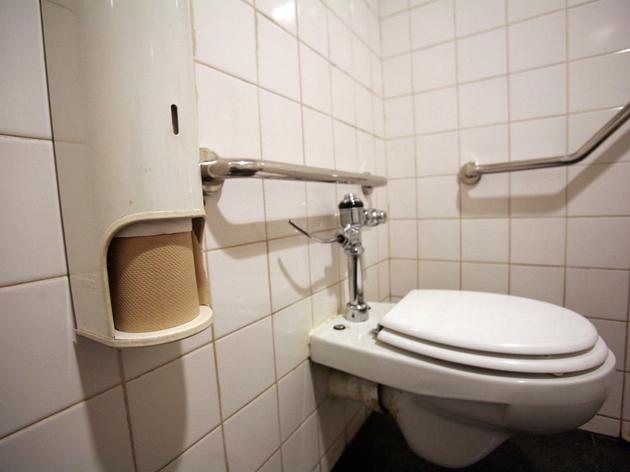We are more prone to health conditions and complications once we get older: arthritis, heart disease, and various forms of dementia, to name a few. Most of this is attributed to how our bodies change over time, but there are things we can do to mitigate health risks—from giving up certain alcoholic drinks to avoiding driving at particular times of the day. According to experts, there's also one major hazard in your bathroom you should get rid of if you're over 65. Read on to find out what you should ditch as a safety precaution.
RELATED: If You're Over 65, Never Do This In the Bathroom, Doctors Warn.
If you're over 65, pay attention to what kind of toilet you have in your bathroom.
You might not think much about the different types of toilets you could have in your bathroom—but once you reach a certain age, you should. Robin Schiltz, a senior home safety specialist and founder of Senior Safety Advice, says that it is not recommended for people over the age of 65 to have a low toilet seat.
"Many seniors have weak leg muscles or problems with balance. This makes it difficult to control both how they sit down and how they get up from a low toilet seat," she explains. "Weak leg muscles increase the risk of falls during the transition from standing to sitting and vice versa, particularly for a frail senior."
But falling is not the only problem. Terri Lemere, MS, an occupational therapist and certified aging in place specialist, says that weakened muscles could make it so that an older adult is unable to get up from a low toilet seat on their own. "This could result in sitting on the toilet seat for a very long time, causing pressure sores or skin breakdown on older, sensitive skin," Lemere says.
Experts recommend that older adults use a higher toilet seat.
Experts recommend that older adults use a higher toilet seat because it "promotes easier, safer transfers to and from the toilet," according to Lemere.

"Using a raised toilet seat keeps the knees at the same height as the hips," Schiltz adds. "This reduces the strength and effort needed to get up or sit down."
While you can just make the switch from a low toilet to a high toilet, you don't necessarily need to go out and buy an entirely new commode. According to Schiltz, there are different products available that can raise the height of an existing toilet seat anywhere from three to five inches. "Raised toilet seats simply fasten to the toilet bowl in place of the existing toilet seat. Some come with handlebars that can help even more," she explains.
RELATED: For more health advice delivered straight to your inbox, sign up for our daily newsletter.
This is not the only thing you can do to make your bathroom safer.
Fixing your toilet seat is just one step experts recommend you take to make your bathroom less hazardous as you get older. According to Schiltz, there are a number of precautions you're advised to make once you reach 65 because "bathrooms have an inherently high risk of slips and falls."
For Schiltz, this includes seniors installing grab bars in the shower and by the toilet, as well using non-slip mats in the shower. Those with weaker leg muscles or balance concerns should also consider having a chair when they shower.
"Another thing you don't want to keep in your bathroom is soap scum in the tub, as the buildup can be slippery and pose a safety hazard," Nancy Belcher, PhD, a health care expert and co-founder of anti-aging wellness center Winona, warns. "Regularly cleaning all bathroom surfaces eliminates this risk."
Millions of people over the age of 65 in the U.S. suffer from falls every year.
Every second of every day, someone over the age of 65 falls in the U.S., according to the Centers for Disease Control and Prevention (CDC). This can have fatal consequences, "making falls the leading cause of injury and injury death," per the agency. The latest data shows that about 36 million falls are reported among older adults each year, resulting in about 32,000 deaths.ae0fcc31ae342fd3a1346ebb1f342fcb
According to the CDC, we encounter more risk factors for falling once we're over the age of 65. These include lower body weakness, vitamin D deficiency, difficulties with walking and balance, the use of medicines, vision problems, foot pain or poor footwear, and home hazards—like a low toilet seat.
"Most falls are caused by a combination of risk factors. The more risk factors a person has, the greater their chances of falling," the CDC says. "[But] falls are not a normal part of aging. You can keep on your feet and avoid the risk of a fall."
RELATED: If You're Over 65, Not Doing This in the Shower Is Causing Hair Loss.









